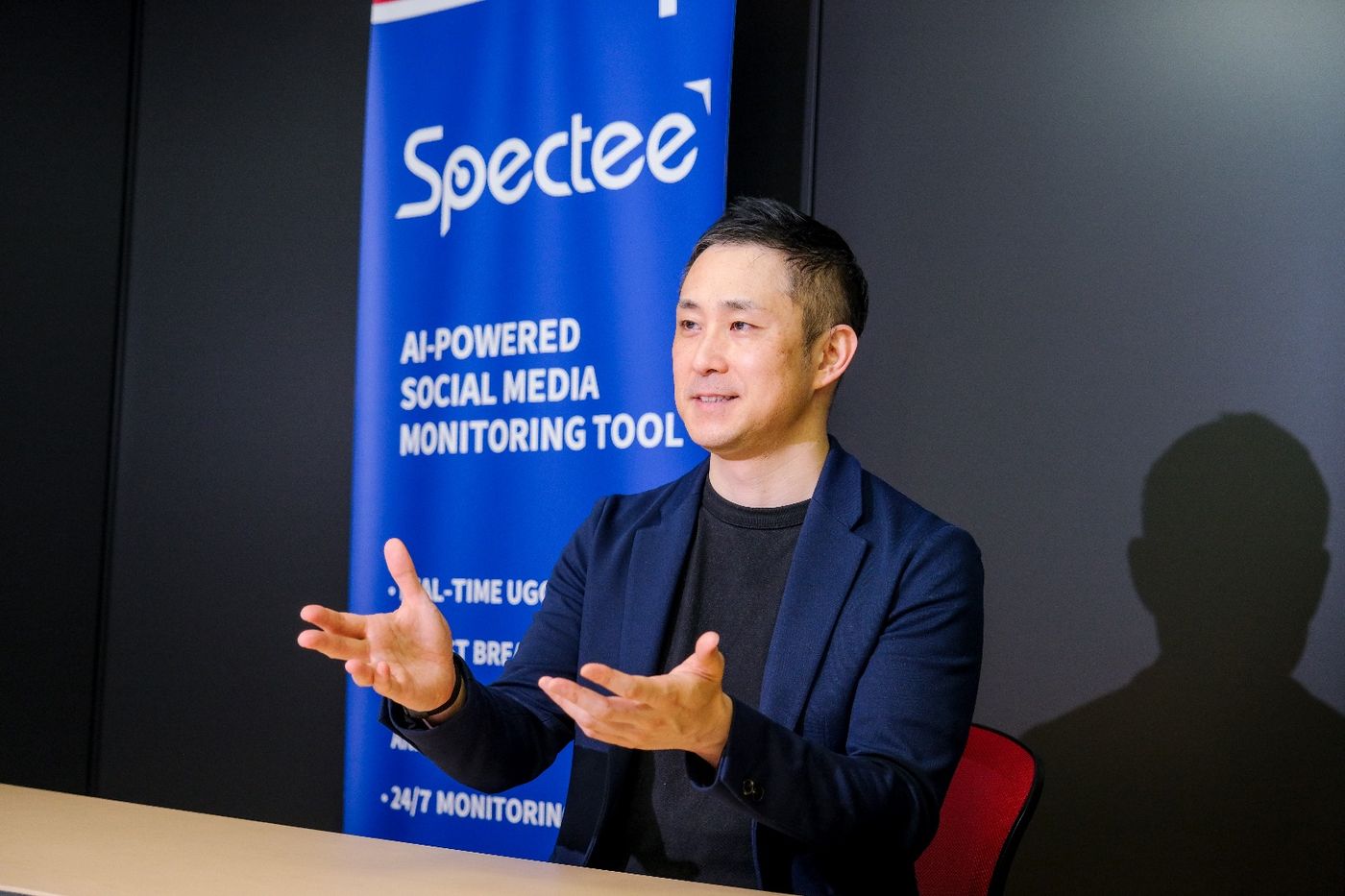Japanese Innovators Entering ASEAN: Spectee
Satoshi Negoro
Spectee tackles crisis preparedness with a data-driven approach. They harness cutting-edge technology to gather massive datasets. By analyzing these datasets, Spectee identifies patterns and trends that predict potential crises. This data is then transformed into informative visualizations that depict past emergencies, current situations, and even simulations of future events. Spectee's focus is three-fold: understanding risk types and locations by analyzing past events, monitoring current situations for emerging threats, and predicting the potential course and impact of future disasters. With that, why don’t you join me in learning more about Spectee with its Director and Chief Operating Officer, Satoshi Negoro.
Could you give a bit of background about you and your career?
After I graduated from university, I joined the Sony Corporation Manufacturing Company. I spent 21 years there and my main expertise was global sales and marketing. I was stationed in France, Singapore, and Dubai. I spent a total of 8 years overseas. During my career at Sony, my turning point was in 2011. At that time, I worked in the Koriama factory in Japan. This city was damaged by the Great Eastern Earthquake in 2011. Many of my colleagues lost their families and houses. This was the turning point for me to get interested in disaster predictions and responses. After this, I quit Sony and joined Spectee.
Could you elaborate more about Spectee and what is it’s overall mission and vision?
The worldwide economic loss caused by natural disasters was estimated to be around USD 300 billion back in 2022. This threat continues to grow and threatens economies across the world. Spectee was founded to fight disasters using advanced technology. Our mission is to visualize crises and live in a world where deaths caused by natural disasters are down to 0.
Spectee aims to visualize risks and predict future damage to build a more resilient society. Can you elaborate on the specific types of risks your data analysis focuses on?
One of our main products is called Spectee Pro. This year we would like to do it in the Philippines. However, for now, we are only providing this product in Japan. In Spectee pro, if a disaster occurs, the interface immediately updates the dashboard to show all the needed information regarding the disaster. This information is taken from social media. For instance, X or Facebook. Our AI can specify the exact location of the disaster based on the images and sentences taken from social media. For instance, if our client is a firefighting company, they will be able to identify what vehicle and team to dispatch based on the width of the road, distance of the disaster, and general situation among others. Not only the information from social media, our customers can get multiple information such as road closures, limited access to transportation, weather information and movies from road & river cameras.
Spectee emphasizes visualizing the “past”, "present", and "future" of risks. Can you provide an example of how your platform visualizes each aspect for a specific type of crisis?
Our biggest value is to detect what is happening in the present. Spectee Pro has an immense database of both past and present disasters. However, the future is the most difficult yet valuable part. As of now, we are providing a service called Flood Estimation. Through a video or image, our AI can estimate the depth of the flood along with the other basic information taken from social media. Using these, we can generate an accurate map identifying the water level and depth of different areas. In the future, our research aims to estimate when the flood will arrive.
Can you share a specific instance where Spectee's predictions helped a user prepare for or respond to a crisis? What were the positive outcomes?
If we can predict when disasters happen, LGUs can take effective action. One typical case is that the responsibility of the LGU is to make an evacuation order. They have to make this order at the right timing due to two reasons: if the order is too early, then the evacuation would be wasteful, if the order is too late, people’s lives may be lost. LGUs are struggling to decide when to make an evacuation order. With Spectee, we can help these LGUs make the order at the right time.
How do you envision Spectee's role in building global resilience to crises in the coming years?
Spectee is currently only in Japan. However, we do have plans for global expansion. The Philippines is the first country we are planning to expand to. After this, we have plans to expand in Indonesia, Thailand, and Vietnam.
Satoshi is the Director and Chief Operating Officer. He is mainly responsible for daily operation and global project management among many others. He is an important figure in revolutionizing crisis management and response not only in Japan, but in the broader region as well. As seen in him, Satoshi is committed to protecting communities from crises, both natural and man-made.
Visit www.techshake.asia if you would like to know and connect more with Spectee.
Are you a startup, investor or corporation? Or do you just enjoy talking about startups? There are many ways that you can work with TechShake.
We’d love to hear from you!